- Clone
- 104 (See other available formats)
- Regulatory Status
- RUO
- Other Names
- Ly-5.2, LCA
- Isotype
- Mouse (SJL) IgG2a, κ
- Ave. Rating
- Submit a Review
- Product Citations
- publications
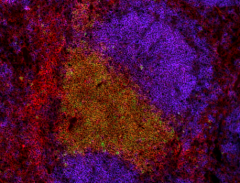
-

BALB/C mouse frozen spleen section was fixed with 4% paraformaldehyde (PFA) for ten minutes at room temperature and blocked with 5% rat serum + FBS for one hour at room temperature. Then the section was stained with 10 µg/ml of CD45.2 (clone 104) Alexa Fluor® 594 (red), 5 µg/ml of CD3 (clone 17A2) Alexa Fluor® 647 (green), and 5 µg/ml of B220 (clone RA3-6B2) Alexa Fluor® 488 (blue) at room temperature for two hours. The image was captured with a 10X objective.
| Cat # | Size | Price | Quantity Check Availability | Save | ||
|---|---|---|---|---|---|---|
| 109850 | 100 µg | 179€ | ||||
CD45.2 is an alloantigen of CD45, expressed by Ly5.2 bearing mouse strains (e.g., A, AKR, BALB/c, CBA/Ca, CBA/J, C3H/He, C57BL, C57BR, C57L, C58, DBA/1, DBA/2, NZB, SWR, 129). CD45, a member of the protein tyrosine phosphatase (PTP) family, is a 180-240 kD glycoprotein expressed on all hematopoietic cells except mature erythrocytes and platelets. There are multiple isoforms in the mouse that play key roles in TCR and BCR signal transduction. These isoforms are very specific to the activation and maturation states of the cell as well as specific cell type. The primary ligands for CD45 are galectin-1, CD2, CD3, CD4, TCR, CD22, and Thy-1.
Product DetailsProduct Details
- Verified Reactivity
- Mouse
- Antibody Type
- Monoclonal
- Host Species
- Mouse
- Immunogen
- B10.S mouse thymocytes and splenocytes
- Formulation
- Phosphate-buffered solution, pH 7.2, containing 0.09% sodium azide.
- Preparation
- The antibody was purified by affinity chromatography and conjugated with Alexa Fluor® 594 under optimal conditions.
- Concentration
- 0.5 mg/ml
- Storage & Handling
- The antibody solution should be stored undiluted between 2°C and 8°C, and protected from prolonged exposure to light. Do not freeze.
- Application
-
IHC-F - Quality tested
SB - Community verified - Recommended Usage
-
Each lot of this antibody is quality control tested by immunohistochemical staining on frozen tissue sections. For immunohistochemistry, a concentration range of 5.0 - 10 μg/ml is suggested. It is recommended that the reagent be titrated for optimal performance for each application.
* Alexa Fluor® 594 has an excitation maximum of 590 nm, and a maximum emission of 617 nm.
Alexa Fluor® and Pacific Blue™ are trademarks of Life Technologies Corporation.
View full statement regarding label licenses - Application Notes
-
The 104 antibody does not react with mouse cells expressing the CD45.1 alloantigen. Additional reported applications (for the relevant formats) include: immunoprecipitation4, in vivo and in vitro blocking of B cell responses1,2, and immunohistochemical staining of acetone-fixed frozen sections3.
- Additional Product Notes
-
This product has been verified for IHC-F (Immunohistochemistry - frozen tissue sections) on the NanoString GeoMx® Digital Spatial Profiler. The GeoMx® enables researchers to perform spatial analysis of protein and RNA targets in FFPE and fresh frozen human and mouse samples. For more information about our spatial biology products and the GeoMx® platform, please visit our spatial biology page.
- Application References
-
- Yakura H, et al. 1983. J. Exp. Med. 157:1077. (Block)
- Yakura H, et al. 1986. J. Immunol. 136:2729. (Block)
- Suzuki K, et al. 2000. Immunity 13:691. (IHC)
- Shen FW, et al. 1986. Immunogenetics 24:146. (IP)
- Baldwin TA and Hogquist KA. 2007. J. Immunol. 179:837.
- Pascal V, et al. 2007. J. Immunol. 179:1751.
- Burman AC, et al. 2007. Blood 110:1064.
- Kincaid EZ, et al. 2007. J. Immunol. 179:3187.
- Phan TG, et al. 2007. Nature Immunol. 8:992.
- Nakano-Yokomizo T, et al. 2011. J. Exp Med. 208:1661. PubMed
- Wen T, et al. 2013. PNAS. 110:6067. PubMed
- Kohlmeier JE, et al. 2008. Immunity. 29:101. (FC) PubMed
- Product Citations
-
- RRID
-
AB_2629589 (BioLegend Cat. No. 109850)
Antigen Details
- Structure
- Protein tyrosine phosphatase (PTP) family, 180-240 kD
- Distribution
-
All hematopoietic cells except mature erythrocytes and platelets of the CD45.2 strain of mice
- Function
- Phosphatase, T and B cell activation
- Ligand/Receptor
- Galectin-1, CD2, CD3, CD4
- Biology Area
- Cell Biology, Immunology, Inhibitory Molecules, Innate Immunity, Neuroscience, Neuroscience Cell Markers
- Molecular Family
- CD Molecules
- Antigen References
-
1. Suzuki K, et al. 2000. Immunity 13:691.
- Gene ID
- 19264 View all products for this Gene ID
- UniProt
- View information about CD45.2 on UniProt.org
Related Pages & Pathways
Pages
Related FAQs
- If an antibody clone has been previously successfully used in IBEX in one fluorescent format, will other antibody formats work as well?
-
It’s likely that other fluorophore conjugates to the same antibody clone will also be compatible with IBEX using the same sample fixation procedure. Ultimately a directly conjugated antibody’s utility in fluorescent imaging and IBEX may be specific to the sample and microscope being used in the experiment. Some antibody clone conjugates may perform better than others due to performance differences in non-specific binding, fluorophore brightness, and other biochemical properties unique to that conjugate.
- Will antibodies my lab is already using for fluorescent or chromogenic IHC work in IBEX?
-
Fundamentally, IBEX as a technique that works much in the same way as single antibody panels or single marker IF/IHC. If you’re already successfully using an antibody clone on a sample of interest, it is likely that clone will have utility in IBEX. It is expected some optimization and testing of different antibody fluorophore conjugates will be required to find a suitable format; however, legacy microscopy techniques like chromogenic IHC on fixed or frozen tissue is an excellent place to start looking for useful antibodies.
- Are other fluorophores compatible with IBEX?
-
Over 18 fluorescent formats have been screened for use in IBEX, however, it is likely that other fluorophores are able to be rapidly bleached in IBEX. If a fluorophore format is already suitable for your imaging platform it can be tested for compatibility in IBEX.
- The same antibody works in one tissue type but not another. What is happening?
-
Differences in tissue properties may impact both the ability of an antibody to bind its target specifically and impact the ability of a specific fluorophore conjugate to overcome the background fluorescent signal in a given tissue. Secondary stains, as well as testing multiple fluorescent conjugates of the same clone, may help to troubleshoot challenging targets or tissues. Using a reference control tissue may also give confidence in the specificity of your staining.
- How can I be sure the staining I’m seeing in my tissue is real?
-
In general, best practices for validating an antibody in traditional chromogenic or fluorescent IHC are applicable to IBEX. Please reference the Nature Methods review on antibody based multiplexed imaging for resources on validating antibodies for IBEX.
Other Formats
View All CD45.2 Reagents Request Custom ConjugationCustomers Also Purchased
Compare Data Across All Formats
This data display is provided for general comparisons between formats.
Your actual data may vary due to variations in samples, target cells, instruments and their settings, staining conditions, and other factors.
If you need assistance with selecting the best format contact our expert technical support team.
-
Biotin anti-mouse CD45.2
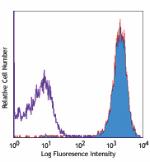
C57BL/6 mouse splenocytes stained with biotinylated 104, fol... -
FITC anti-mouse CD45.2

C57BL/6 mouse splenocytes stained with 104 FITC -
PE anti-mouse CD45.2
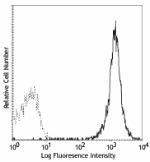
BALB/c (solid line) and SJL (broken line) splenocytes staine... -
Purified anti-mouse CD45.2
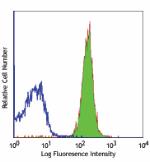
C57BL/6 mouse splenocytes stained with purified 104, followe... -
APC anti-mouse CD45.2
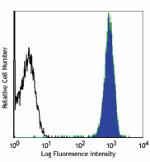
C57BL/6 mouse splenocytes stained with 104 APC -
Alexa Fluor® 488 anti-mouse CD45.2
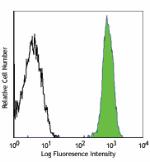
C57BL/6 mouse splenocytes stained with 104 Alexa Fluor® 488 -
Alexa Fluor® 647 anti-mouse CD45.2
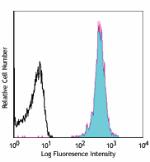
C57BL/6 mouse splenocytes stained with 104 Alexa Fluor® 647 -
Pacific Blue™ anti-mouse CD45.2

C57BL/6 mouse splenocytes stained with Pacific Blue™ 1... -
Alexa Fluor® 700 anti-mouse CD45.2
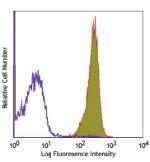
C57BL/6 mouse splenocytes stained with 104 Alexa Fluor® ... -
APC/Cyanine7 anti-mouse CD45.2
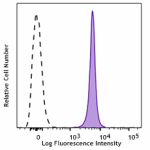
C57BL/6 mouse splenocytes were stained with CD45.2 (clone 10... -
PerCP anti-mouse CD45.2
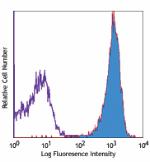
C57BL/6 mouse splenocytes stained with 104 PerCP -
PerCP/Cyanine5.5 anti-mouse CD45.2
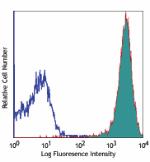
C57BL/6 mouse splenocytes stained with 104 PerCP/Cyanine5.5 -
PE/Cyanine7 anti-mouse CD45.2
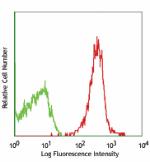
C57BL/6 mouse splenocytes stained with 104 PE/Cyanine7 -
Brilliant Violet 421™ anti-mouse CD45.2
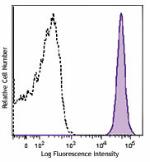
C57BL/6 mouse splenocytes were stained with CD45.2 (clone 10... -
Brilliant Violet 570™ anti-mouse CD45.2
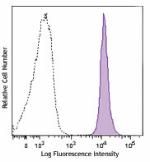
C57BL/6 mouse splenocytes were stained with CD45.2 (clone 10... -
Brilliant Violet 650™ anti-mouse CD45.2
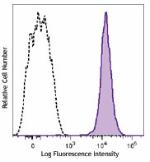
C57BL/6 mouse splenocytes were stained with CD45.2 (clone 10... -
Brilliant Violet 510™ anti-mouse CD45.2
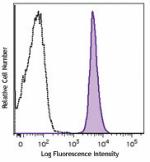
C57BL/6 mouse splenocytes were stained with CD45.2 (clone 10... -
Brilliant Violet 785™ anti-mouse CD45.2

C57BL/6 mouse splenocytes were stained with CD45.2 (clone 10... -
Brilliant Violet 605™ anti-mouse CD45.2
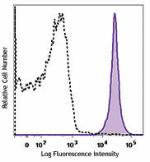
C57BL/6 mouse splenocytes were stained with CD45.2 (clone 10... -
Purified anti-mouse CD45.2 (Maxpar® Ready)
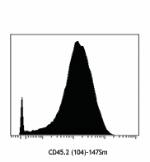
C57BL/6 mouse bone marrow cells stained with 147Sm-anti-CD45... -
PE/Dazzle™ 594 anti-mouse CD45.2

C57BL/6 mouse splenocytes were stained with CD45.2 (clone 10... -
Brilliant Violet 711™ anti-mouse CD45.2
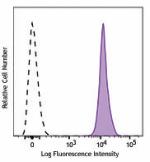
C57BL/6 mouse splenocytes were stained with CD45.2 (clone 10... -
Alexa Fluor® 594 anti-mouse CD45.2
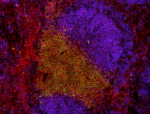
BALB/C mouse frozen spleen section was fixed with 4% parafor... -
APC/Fire™ 750 anti-mouse CD45.2
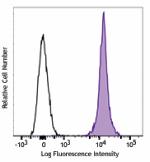
C57BL/6 mouse splenocytes were stained with CD45.2 (clone 10... -
TotalSeq™-A0157 anti-mouse CD45.2
-
TotalSeq™-B0157 anti-mouse CD45.2
-
TotalSeq™-C0157 anti-mouse CD45.2
-
Brilliant Violet 750™ anti-mouse CD45.2

C57BL/6 mouse splenocytes were stained with CD45.2 (clone 10... -
Spark Blue™ 550 anti-mouse CD45.2
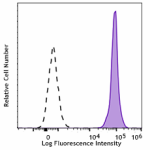
C57BL/6 mouse splenocytes were stained with CD45.2 (clone 10... -
Spark NIR™ 685 anti-mouse CD45.2
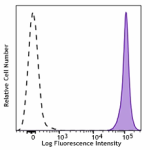
C57BL/6 mouse splenocytes were stained with anti-mouse CD45.... -
Spark UV™ 387 anti-mouse CD45.2
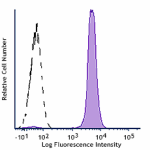
C57BL/6 mouse splenocytes were stained with anti-mouse CD45.... -
Spark Blue™ 574 anti-mouse CD45.2 (Flexi-Fluor™)
-
Spark Red™ 718 anti-mouse CD45.2 (Flexi-Fluor™)

 Login / Register
Login / Register 











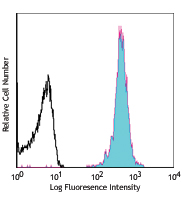
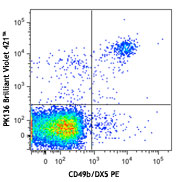





Follow Us